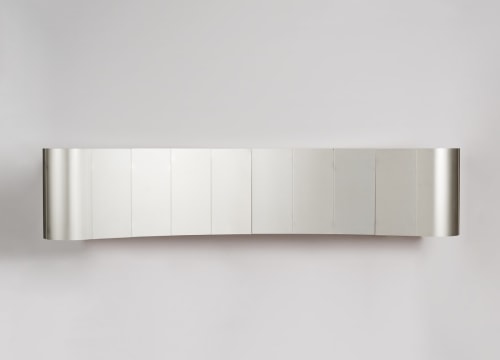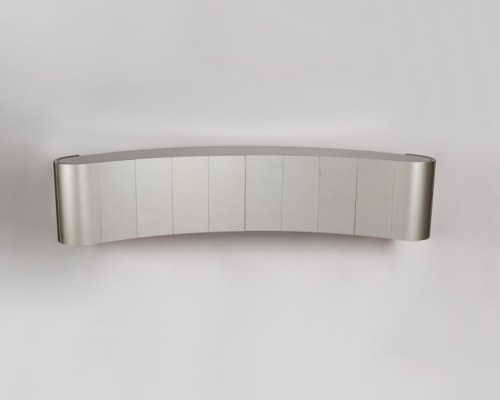

Maxime Old was born in 1910 to a family of ébénistes, or master cabinet makers, in Maisons Alfort, a suburb of Paris in the ValdeMarne. His father and grandfather had held shops for decades in the faubourg St. Antoine, an area renowned for their trade.
When Old decided to go into the family business, and to design and create his own furniture, his father’s workshops were on Rue Chanzy. Louis Old had a dozen workers, and built furniture for large stores and private individuals alike. In spite of his father’s success, Maxime’s aspirations were grander.
With the hope of propelling the family into modernity, he set off for the École Boulle. Old excelled in his classes, learning everything about furniture design and production. His early designs caught the eye of André Fréchet, the director at the École who used his own great popularity promote the young designer’s work.
After graduating, Old joined the studio of Émile-Jacques Ruhlmann, where he worked for several years. He took away an intimate knowledge of how innovative projects could be executed effectively, as well as the consummate importance of drawing, of achieving perfection in design. Ruhlmann’s aesthetic, and that of the Deco period in general, can still be seen in his work. There exist for instance, a certain luxurious curvature, the use of uncommon metals, lush finishes, rare woods like cherry, ash, and walnut, and the employment of plush upholstery.
But Old’s work has a character of its very own. While reminiscent in certain ways to the work of designers who preceded him, Old’s work is more interesting for its innovations, and his efforts are perhaps responsible for the shift in preferences toward cleaner designs. While certain forms of of the Deco period are certainly present, Old’s aesthetic as a whole is sleeker, more simple, and sculptural – in effect, more modern.
His work also revealed the artist’s fascination in function—that a piece should, above all else, have a purpose—in his interest in space, moving and hidden elements like surfaces and drawers. These were things that could serve several purposes, and were not merely seating, tables, or cabinets. This style appealed to businessmen, largely: corporate clients, law firms, political buildings, and other large scale projects. The leading and influential design periodicals Art et Décoration and Le décor d'aujourd'hui were constantly publishing examples of his work and heaping praise upon him.
In addition to opening his own space, Hoche Gallery, in Paris to present his works and to launch young talents, including ceramists who would later find fame of their own, the Mobilier National commissioned him to design pieces for theHôtel de Ville in Paris, and the Ministry of France for their offices in The Hague and Helsinki. In addition to many private and government commissions, he worked on the interiors of several ocean liners, including the Atlantic and the Île de France. He also designed facilities and private homes all over the world. Exhibiting at the various Salons into the 1960s, Old also served as VicePresident of the Society of Artist Decorators, a professor of Design at the Art and Technique Center of the Central Union of Decorative Arts, Professor of Design at the École National Supérieure for Technical Education, Lecturer at the esteemed École des Arts Décoratifs. One of his final contributions was leading the interior design studio at the École. Maxime Old worked steadily until his death in 1991.